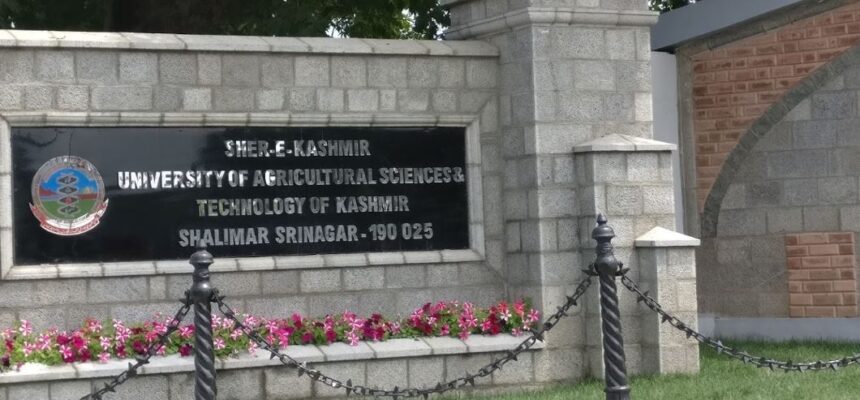Maize, wheat and rice, are three most important crops in the world. Maize has very wide adaptation and climate-resilience and is cultivated in 172 countries having tropical, sub-tropical and temperate climates and altitudes ranging from sea level to 3000 meters above sea level. Maize has very wide usage, such as food, feed, fodder/silage and most importantly as a raw material of a large number of products. Maize is a prospective crop under climate change scenario as it is a C4 plant besides having wide adaptability. In India Maize a predominantly Kharif crop is cultivated on an area of 10.04 million hectares with a production of 33.62 million tonnes and a productivity of 3.49 tonnes per hectare.
Maize is consumed as feed, food and as a source of more than 3,500 industrial/ processed products of which starch is the most important. In addition, it is an important green fodder/silage crop, and its importance as bio-energy crop is increasing. Maize grain with high energy value and less anti-nutritional properties has tremendous demand in feed industry. Feed accounts for about 60% of the maize consumption, of which share of poultry feed is 47%. The food consumption accounts for 20% of the produce, with direct consumption being 13% and that in the form of processed food being 7%. The starch industry utilizes 17%, and the remaining 3% is used for seeds and other purposes. The versatile usage of maize by different sectors including industries means that if properly channelized, its price will tend to remain remunerative which is very much essential for increasing farmer’s income.
Maize in J&K is a rainfed crop (> 85% area) covering an area of 2.80 lakh hectares with a production of 5.60 lakh tonnes and a productivity of 2 tonnes per hectare. The reasons for low yield include predominance of land races, poor soil nutrition, erratic rainfall, poor diffusion of high yielding cultivars and lower size of land holdings. Understanding smallholder farmer livelihood strategies, their human, natural, social, financial, physical capital, and capturing the complexity of maize-based systems, their evolution and trajectories in response to external drivers of change such as access to input/output market, demographic pressure on the land, changing demographic dependency ratios in rural areas, and climate change/variability is a must to co-develop, adapt, integrate at farm level, and scale-out improved agronomic practices and innovations.
Technical innovations need to be assessed not only on their potential to increase the productivity of a single commodity, but also overall farm productivity, profitability, stability, production and market risks, resilience, as well as the interest and capacity (knowledge, financial) of individual farmers to adopt those innovations. Technical innovations applied to maize also interact with other production units within a smallholder farm, especially when farming resources such as land, labor, and capital are in short supply. Trade-offs between investments in different production units and between short- and longer-term benefits are the rule rather than the exception in smallholder farming systems.
Adoption of new technologies is based not only on their increased efficiency with respect to the existing ones. Smallholder farming systems are commonly complex in terms of the different activities and their inter-linkages (e.g. crop rotations and intercrops, crop-livestock, labor and inputs allocation), which results in tradeoffs or synergies and in terms of the multiplicity of goals pursued by farm households (food production, cash production, labour productivity, risk management, maintenance/improvement of the production resource base). Farming families within a specific community also commonly have different production objectives and access to resources for investing in farming.
To foresee the Maize Programme in the Country the Indian Council of Agricultural Research (ICAR) started the All India Coordinated Research Project on Maize (AICRPM) in the year 1957. The Project has thirty-two regular centers spread across India and bracketed into Five Zones (I-V). The AICRPM, Srinagar Centre operates from Dryland Agriculture Research Station which is a constituent of SKUAST-K. It is operational in the University since 1984 previously being a part of Department of Agriculture Kashmir and is a prized center at National Level.
Standing on the base of a very robust germplasm collection of more than 3000 lines in Field Corn/QPM/Pop Corn/Sweet Corn and Forage Maize the center has developed 24 varieties of maize suitable for cultivation at the UT and National Level with inbuilt resilience to various biotic and abiotic stresses. Of late the focus of the center has been to develop nutritionally enriched (QPM + ProVA) climate smart varieties and technologies utilizing the collaborative approach involving disciplines like Plant Physiology, Biochemistry, Pathology etc. Utilizing the services of an off season facility at Hyderabad two crops of maize are raised per year to hasten the breeding process.
The center has benefitted immensely from its Inter-Institutional Collaboration with various Regional, National and International Institutions. Notable Collaborators being CIMMYT (International Maize and Wheat Institute) Mexico , Nordic Gene Bank, Sweden, IARI, New Delhi, ICGEB, New Delhi, PAU, Ludhiana, VPKAS, Almora, IIMR, Ludhiana, MPUAT, Udaipur, NIASM, Baramati, Kashmir University etc. to name a few. The Collaboration has resulted in securing a large number of externally funded competitive grants from funding agencies like DST, SERB, DBT, NMHS, UGC, PPVFRA, JKDST etc. and has put the center on a national pedestal in maize improvement.
The centre caters to the needs of a large number of PG and PhD level students from SKUAST-K and other institutions who are guided by the Scientists working on different aspects of Maize to complete their thesis/dissertation work. More than 200 Research Papers in impact Journals at National and International level have been published from the work in the last decade.
Among the land mark varieties / hybrids released include Composite-6, Composite-15, Shalimar Maize Composite-3, Kishen Ganga-2, Shalimar Maize Composite-4 , Shalimar Maize Composite-8, Shalimar Pop Corn-1 , Shalimar Sweet Corn-1, Shalimar Maize Hybrid-5, Shalimar Quality Protein Maize Hybrid-1, Shalimar Fodder Maize-1. These products are covering 30 percent of the maize acreage in the state (Approx. 84000 hectares) and have been developed utilizing conventional, molecular and trait based physiological approaches.
The maize programme at SKUAST-K not only releases varieties/technologies at State Level but also National Level as well. A recent example is release of two disease resistant maize varieties for organic cultivation in the state of Sikkim in June, 2024 where high incidence of foliar diseases is a big constraint in maize cultivation. To cater to the challenges of climate resilience and hunger the programme works on aspects like managed drought/cold stress screening utilizing Root system architectural traits, hyper-spectral Imaging, Osmotic stress screening as well as pyramiding traits like enhanced essential amino acids, Pro-Vitamin A, High Zinc and Low phytic acid to improve Maize crop for human and industrial purposes particularly poultry. Of late the focus has also been on developing fodder and silage maize having features like high biomass, digestibility and quality to augment the dairy industry. Forage maize assumes critical importance as the state is 50 percent deficit in fodder. (green as well as dry).
The issues of seed production are taken care of by the programme in the form of MoUs with private and public players, seed villages to augment the seed chain in addition to the multiplication done by the department of agriculture. To keep pace with the scientific development worldwide, the research on new tools like gene editing (considering the potential, requires greater emphasis and priority), genomic selection, and doubled haploid technology are envisaged to be a part of the programme.
Biofortified maize hybrids developed through MAS have been popularized through demonstration in farmers’ fields and Krish Vigyan Kendras (KVKs) at diverse locations. SKUAST-K, Srinagar has undertaken large-scale seed production of Pusa Vivek QPM9 improved in Deedikote and Punzuwa villages of Kupwara. The seeds were distributed across Kupwara covering an area of 500 ha over the years. To address the nutritional issues of the maize growing farmers and to improve the seed replacement rate of the region, the seeds were subsequently distributed among the farmers of district Kupwara .
The future vision of the programme is to have a sustainable maize-based economy for food, feed, fodder and fuel purposes in J&K.
(Author is Professor and Head Dry-land Agriculture Research Station SKUAST and Principal Investigator of ICAR- All India Co-ordinated Research Project on Maize)








